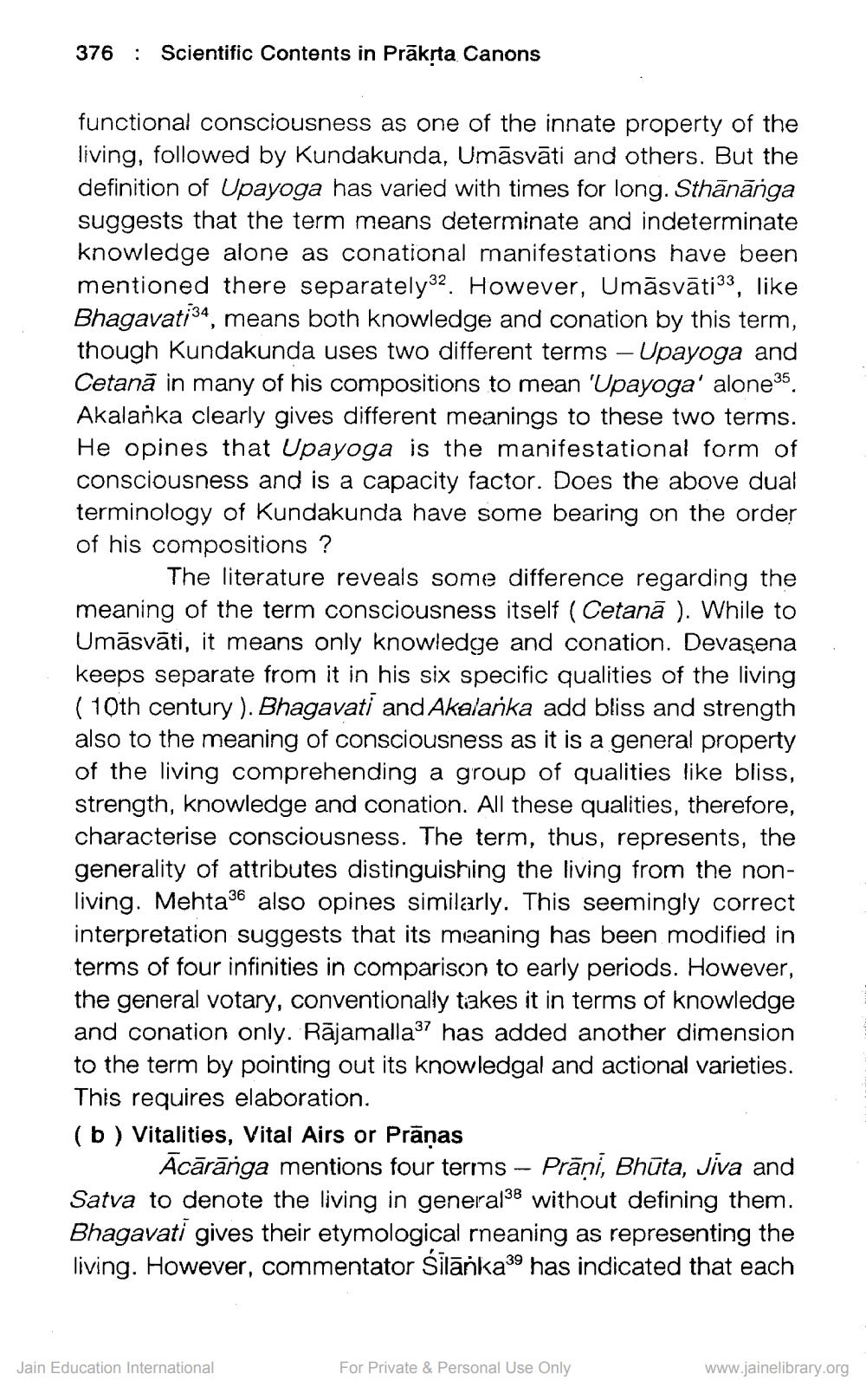________________
376 : Scientific Contents in Prākṣta Canons
functional consciousness as one of the innate property of the living, followed by Kundakunda, Umāsvāti and others. But the definition of Upayoga has varied with times for long. Sthānānga suggests that the term means determinate and indeterminate knowledge alone as conational manifestations have been mentioned there separately32. However, Umāsvāti33, like Bhagavati34, means both knowledge and conation by this term, though Kundakunda uses two different terms – Upayoga and Cetanā in many of his compositions to mean 'Upayoga' alone35 Akalanka clearly gives different meanings to these two terms. He opines that Upayoga is the manifestational form of consciousness and is a capacity factor. Does the above dual terminology of Kundakunda have some bearing on the order of his compositions ?
The literature reveals some difference regarding the meaning of the term consciousness itself (Cetanā ). While to Umāsvāti, it means only knowledge and conation. Devasena keeps separate from it in his six specific qualities of the living (10th century ). Bhagavati and Akalarika add bliss and strength also to the meaning of consciousness as it is a general property of the living comprehending a group of qualities like bliss, strength, knowledge and conation. All these qualities, therefore, characterise consciousness. The term, thus, represents, the generality of attributes distinguishing the living from the nonliving. Mehta6 also opines similarly. This seemingly correct interpretation suggests that its meaning has been modified in terms of four infinities in comparison to early periods. However, the general votary, conventionally takes it in terms of knowledge and conation only. Rājamalla has added another dimension to the term by pointing out its knowledgal and actional varieties. This requires elaboration. (b) Vitalities, Vital Airs or Prānas
Ācārānga mentions four terms - Prāni, Bhūta, Jiva and Satva to denote the living in general38 without defining them. Bhagavati gives their etymological reaning as representing the living. However, commentator Silanka39 has indicated that each
Jain Education International
For Private & Personal Use Only
www.jainelibrary.org




